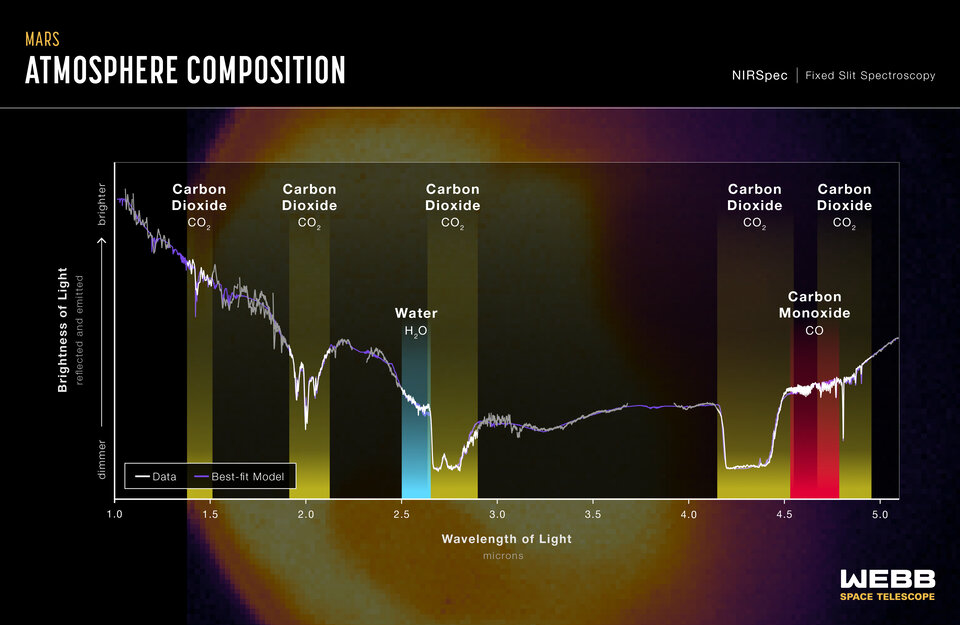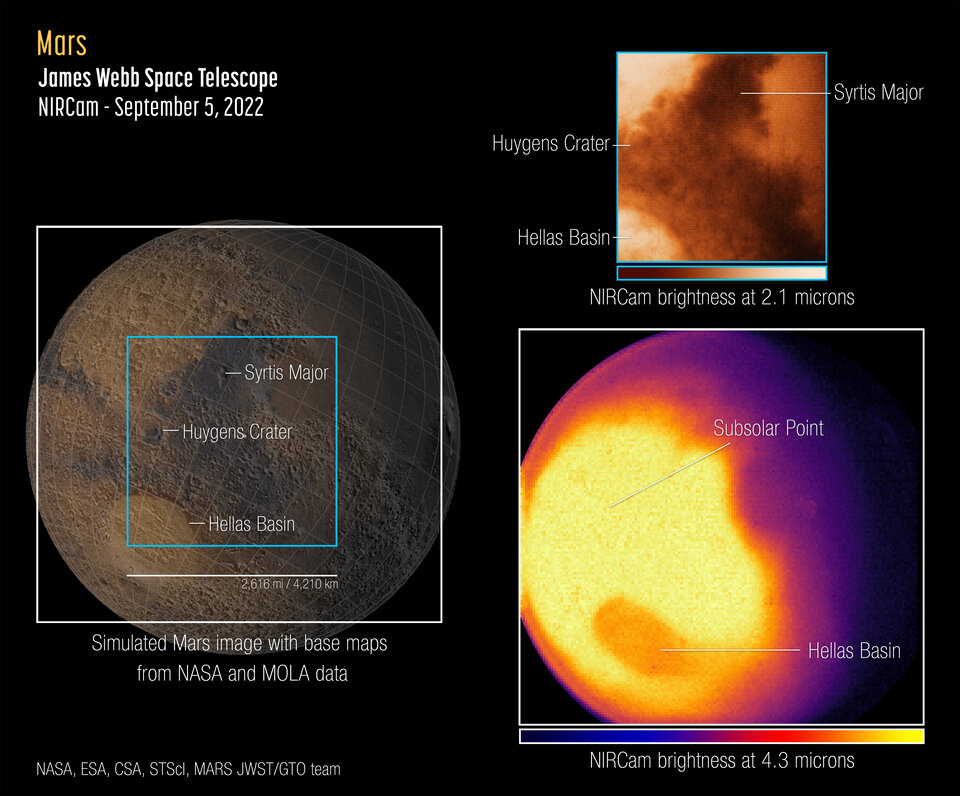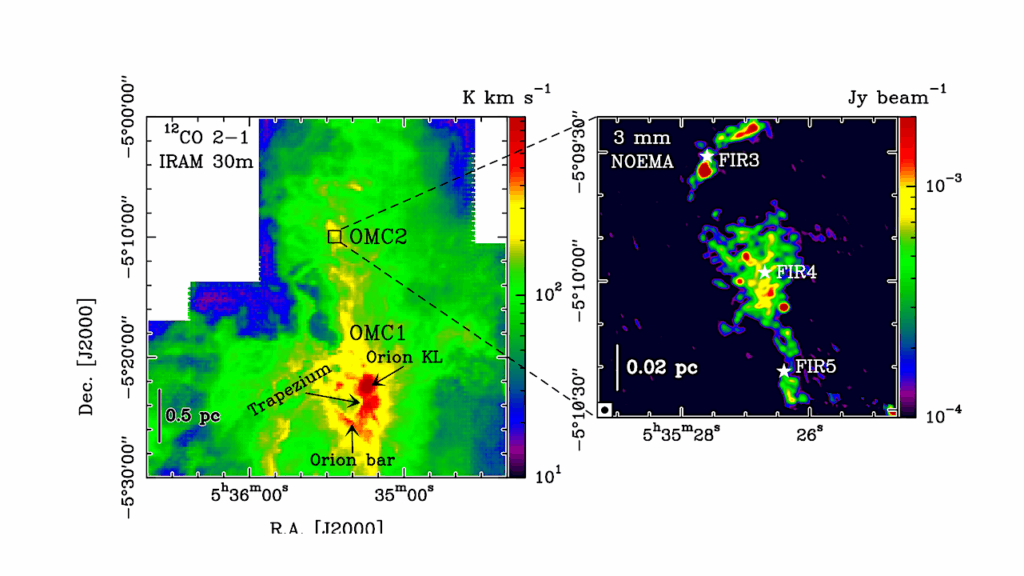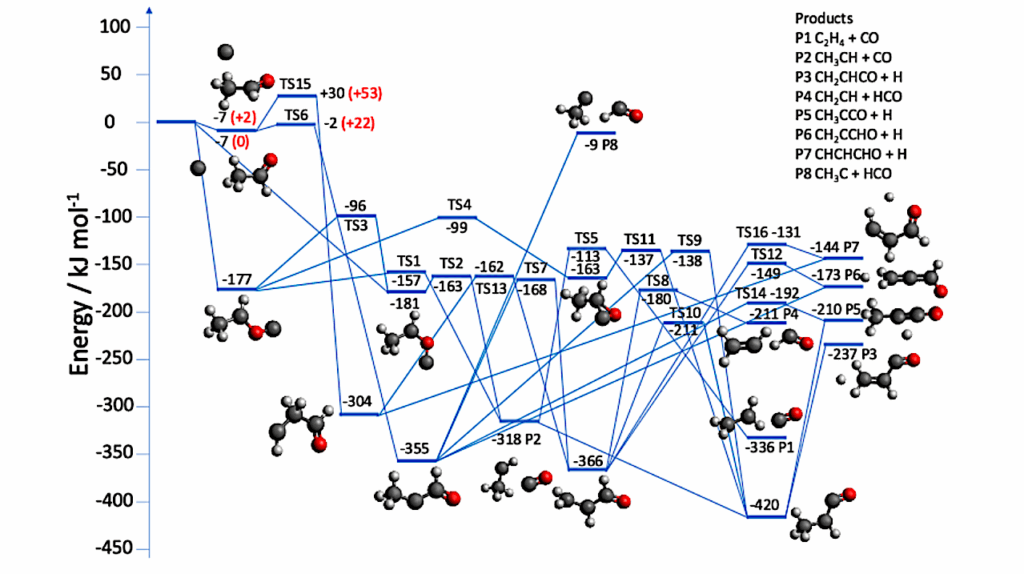First Infrared Spectra Of Mars Taken By The Webb Space Telescope

The James Webb Space Telescope captured its first images and spectra of Mars on 5 September 2022.
The telescope, an international collaboration between NASA, ESA and the Canadian Space Agency, provides a unique perspective with its infrared sensitivity on our neighbouring planet, complementing data being collected by orbiters, rovers, and other telescopes.
Webb’s unique observation post nearly 1.5 million kilometres away at the Sun-Earth Lagrange point 2 (L2) provides a view of Mars’ observable disk (the portion of the sunlit side that is facing the telescope). As a result, Webb can capture images and spectra with the spectral resolution needed to study short-term phenomena like dust storms, weather patterns, seasonal changes, and, in a single observation, processes that occur at different times (daytime, sunset, and nighttime) of a Martian day.
Because it is so close, the Red Planet is one of the brightest objects in the night sky in terms of both visible light (which human eyes can see) and the infrared light that Webb is designed to detect. This poses special challenges to the observatory, which was built to detect the extremely faint light of the most distant galaxies in the universe. Webb’s instruments are so sensitive that without special observing techniques, the bright infrared light from Mars is blinding, causing a phenomenon known as “detector saturation.” Astronomers adjusted for Mars’ extreme brightness by using very short exposures, measuring only some of the light that hit the detectors, and applying special data analysis techniques.
Webb’s first images of Mars, captured by the Near-Infrared Camera (NIRCam), show a region of the planet’s eastern hemisphere at two different wavelengths, or colours of infrared light. This image shows a surface reference map from NASA and the Mars Orbiter Laser Altimeter (MOLA) on the left, with the two Webb NIRCam instrument field of views overlaid. The near-infrared images from Webb are shown on the right.

First Webb observations of Mars
Webb’s first near-infrared spectrum of Mars, captured by the Near-Infrared Spectrograph (NIRSpec), demonstrates Webb’s power to study the Red Planet with spectroscopy.
Whereas the Mars images show differences in brightness integrated over a large number of wavelengths from place to place across the planet at a particular day and time, the spectrum shows the subtle variations in brightness between hundreds of different wavelengths representative of the planet as a whole. Astronomers will analyse the features of the spectrum to gather additional information about the surface and atmosphere of the planet.
In the future, Webb will be using this imaging and spectroscopic data to explore regional differences across the planet, and to search for trace species in the atmosphere, including methane and hydrogen chloride.
These observations of Mars were conducted as part of Webb’s Cycle 1 Guaranteed Time Observation (GTO) Solar System program led by Heidi Hammel of the Association of Universities for Research in Astronomy (AURA).
ESA operates two Mars orbiters, Mars Express and the ExoMars Trace Gas Orbiter, that have brought a treasury of insight into the Red Planet’s atmosphere and surface. Furthermore, ESA collaborates with the Japanese Aerospace Exploration Agency (JAXA) on the Martian Moons eXploration (MMX) mission, soon to launch for Mars’ moon Phobos.
NIRSpec was built for the European Space Agency (ESA) by a consortium of European companies led by Airbus Defence and Space (ADS) with NASA’s Goddard Space Flight Centre providing its detector and micro-shutter subsystems.
Note: This post highlights images from Webb science in progress, which has not yet been through the peer-review process.
Astrobiology








